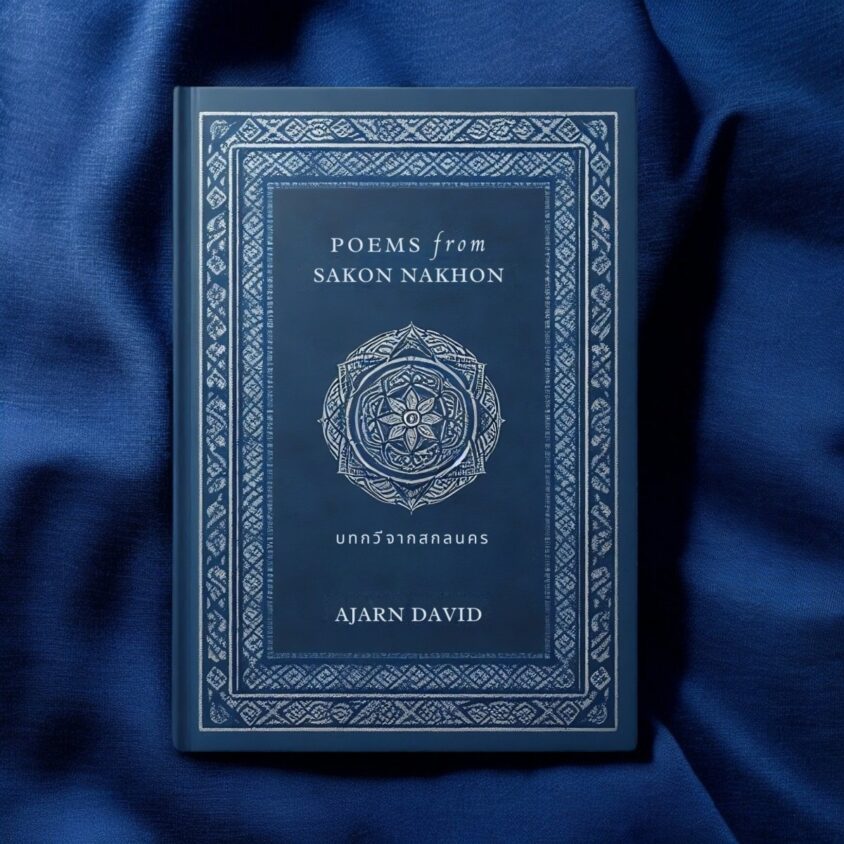Thai Love Poetry Finds Unique Expression in New Book

Love poetry has been an essential part of Thai literary tradition for centuries, reflecting not just romance but also cultural values, spirituality, and the deep emotional undercurrents of human relationships. From the highly structured royal verse of the Ayutthaya period to the legendary works of Sunthorn Phu in the Rattanakosin era, Thai love poetry has long celebrated themes of devotion, longing, heartbreak, and fate.
Traditional Thai poetry, such as klon suphap, chan, and kap, follows intricate metrical patterns and rhyme schemes, often drawing on nature imagery to express romantic feelings. Classical love poems frequently feature elements of courtship, separation, and perseverance, with lovers compared to celestial beings, blooming lotus flowers, or the ever-shifting tides. Love in these works is often intertwined with Buddhist notions of impermanence, reinforcing the idea that passion is both beautiful and fleeting.
However, modern Thai poetry has begun to move beyond rigid forms, embracing more personal and immediate expressions of love. Ajarn David’s “Poems from Sakon Nakhon” is a striking example of this evolution.
Written in free verse and presented in both Thai and English, the collection moves away from classical structures while maintaining the emotional depth and cultural resonance of Thai love poetry. His love poems do not rely on elaborate metaphors or strict rhyme patterns; instead, they capture love as it is felt in real life — tender, raw, and often unexpected.
This departure from formality makes “Poems from Sakon Nakhon” (Thai Poetry in English) accessible to modern readers while still honoring the traditions and philosophies that have shaped Thai expressions of love for generations.
A Love That Transcends Distance and Time
One of the most striking love poems in the collection explores the idea of unwavering commitment. The speaker promises to remain by their beloved’s side, no matter the years, the distance, or even death itself. This is not love as mere emotion, but as an unbreakable vow — something eternal, unaffected by the impermanence of the world.
This idea aligns with Buddhist philosophy, where love is often seen as something that endures beyond individual lifetimes. Instead of focusing on fleeting passion, the poem portrays love as a profound spiritual connection that persists regardless of external circumstances.
The Thai Concept of Trust in Love
In another poem, Ajarn David explores the Thai word wai-jai, which means to entrust one’s heart to another. In Thai culture, love is not just about affection — it is about trust, security, and the careful nurturing of a relationship. The poem beautifully describes how, for many Thai women, the moment they say wai-jai (ไว้ใจ) is more than just a confession of love; it is an act of complete surrender, an offering of the heart to someone they believe will guard and cherish it.
This perspective is distinct from Western notions of love, which often emphasize individual passion and spontaneity. In contrast, Thai love, as depicted in this collection, is built on patience, understanding, and the gradual deepening of trust.
Falling in Love: A Thai Perspective
One of the most playfully insightful poems in the book contrasts the Western phrase “falling in love” with the Thai phrase dtok loom ruk (ตกหลุมรัก) — which literally means “falling into the pit of love”. The poem humorously suggests that love is not a gentle descent into bliss but a sudden and overwhelming plunge from which one may struggle to escape.
This metaphor speaks to the deep, consuming nature of love in Thai culture, where emotions often run beneath the surface but, once revealed, can be all-encompassing. The imagery in this poem captures the excitement, intensity, and even danger of love — reminding readers that passion, while intoxicating, can also be an unpredictable force.
Poetry of Love & Impermanence
Thai poetry has often embraced the Buddhist concept of impermanence, and “Poems from Sakon Nakhon” continues this tradition. One poem compares love to a single seed that must find the right soil to grow, while another describes love as something that, like the changing seasons, may arrive unexpectedly but is never guaranteed to stay.
These poems capture the delicate balance between joy and sorrow in love. In Thai culture, love is often seen as something to be cherished in the present moment rather than grasped too tightly. This view contrasts with Western ideals of love as something to be possessed or controlled.
Thai Heartbreak and Unfulfilled Love
Not all the love poems in “Poems from Sakon Nakhon” are about fulfillment. Some speak to longing and loss, such as a poem that likens heartbreak to a grand tree that has weathered storms for years, only to be felled in an instant by a single swing of an axe.
Another poem tells the tragic legend of Nong Han Lake, where a love affair gone wrong is said to have created the vast body of water. This reinforces the idea that love’s beauty often lies in its fragility and that some of the most profound stories of love are those left incomplete.
Modern Love and Thai Cultural Expectations
A more contemporary take on love appears in a poem about a woman who, despite having been loved deeply by many, still longs for a man who is ruay (rich) and law (handsome). This poem reflects modern tensions between genuine connection and societal expectations, as well as dreams vs. reality.
Similarly, a lighthearted but insightful poem discusses the difference between a Western kiss and a Thai hawm (a kiss on the cheek). In Thai culture, a hawm (หอม) carries a deep emotional weight, symbolizing tenderness and respect rather than just physical attraction.
What Makes it a Unique Thai Love Poetry Collection
- A Fresh, Accessible Style – Unlike traditional Thai poetry, these poems are written in free verse, making them easier to connect with for modern readers.
- Bilingual Presentation – Seeing love expressed in both English and Thai allows readers to appreciate the beauty of each language and how cultural perspectives shape expressions of emotion.
- A Deep Cultural Insight – The poems reflect Thai values of trust, patience, and the impermanence of all things, offering a different lens on love compared to Western poetry.
- A Mix of Passion, Devotion, and Loss – The collection does not present a single view of love but instead explores its many facets — from lifelong commitment to the bittersweetness of lost love.
For readers searching for Thai love poetry that is heartfelt, deeply cultural, and beautifully written, “Poems from Sakon Nakhon” offers something truly special. It captures love not as an idealized fantasy, but as something real — sometimes joyful, sometimes painful, but always meaningful. While at the same time, the book offers a unique window into Thai culture, spirituality, and daily life. Whether you are looking for poetry about devotion, longing, heartbreak, or the quiet, steady love that endures through time, this collection will leave a lasting impression.
“Poems from Sakon Nakhon” is available internationally in paperback and hardcover via Amazon. In Thailand, it can be bought at Ysaan Books’ online store on Shopee and Lazada. Click Here to Learn More.

